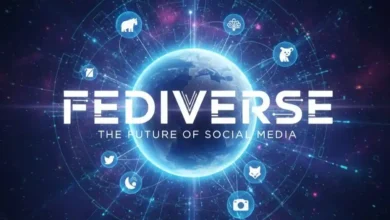How Nanotech and AI are Building Our Future, One Atom at a Time

The age of Artificial Intelligence is upon us, a whirlwind of innovation transforming every facet of our lives at a breathtaking pace. From self-driving cars to personalized medicine, AI’s influence is undeniable. But as we grapple with the implications of ever-smarter machines, another, equally profound revolution is quietly unfolding at the atomic scale: nanotechnology.
Far from being a separate phenomenon, nanotech and AI are not just co-existing; they are converging in a powerful synergy that promises to reshape our world in ways we’re only just beginning to comprehend. This isn’t science fiction anymore; it’s the meticulous engineering of the future, atom by atom, driven by the unparalleled processing power of AI.
Nanotech’s Silent Ascent: Beyond Miniaturization
For decades, nanotechnology has been a buzzword, often associated with tiny robots and fantastical materials. While those visions are slowly becoming reality, the true power of nanotech lies in its fundamental ability to manipulate matter at the scale of 1 to 100 nanometers – roughly 100,000 times smaller than the width of a human hair.
This unprecedented control allows us to design materials with novel properties, build microscopic devices, and interact with biological systems in entirely new ways. Think of it as having the ultimate LEGO set, where each “brick” is an atom or molecule, and we can arrange them with precision to create anything we can imagine.
So, how does AI fit into this intricate dance?
The AI-Nanotech Nexus: A Symbiotic Evolution
AI is the accelerator, the designer, and the navigator for the nanotech revolution. Here’s how this powerful partnership is evolving:
- Accelerated Discovery of Nanomaterials: Traditional materials science is a slow, iterative process of trial and error. AI, particularly machine learning algorithms, can sift through vast databases of chemical structures and predict the properties of novel nanomaterials with remarkable accuracy. This allows researchers to rapidly identify promising candidates for specific applications, dramatically shortening development cycles. Imagine AI designing a perfect, self-healing, super-strong nanocoating for a spacecraft, all without a single lab experiment.
- Precision Manufacturing at the Nanoscale: Building intricate nanostructures requires incredible precision. AI-powered robotics and automated systems are becoming increasingly adept at manipulating individual atoms and molecules, orchestrating complex self-assembly processes, and even correcting errors in real-time. This level of control is crucial for creating functional nanodevices with consistent quality.
- Smart Nanosensors and Diagnostics: Nanotechnology allows us to create sensors so small they can detect changes at the cellular or even molecular level. When paired with AI, these nanosensors become incredibly powerful diagnostic tools. Imagine a nanobot flowing through your bloodstream, constantly monitoring for early signs of disease and relaying real-time data to an AI-powered diagnostic system.
- Optimizing Nanomedicine Delivery: One of nanomedicine’s biggest challenges is targeted drug delivery – ensuring therapeutic agents reach diseased cells without harming healthy ones. AI can design nanoparticles that precisely recognize and bind to cancer cells, for example, and even predict the optimal dosage and delivery routes for individual patients, revolutionizing personalized medicine.
Real-World Applications: From the Clinic to the Cosmos
The convergence of AI and nanotech is not a distant dream; it’s already beginning to manifest in tangible ways, promising to profoundly shape our future:
1. Healthcare: The Ultimate Personalized Medicine
- Early Disease Detection: AI-powered nanobiosensors will enable non-invasive, continuous monitoring for diseases like cancer, Alzheimer’s, and cardiovascular conditions, detecting them at their earliest, most treatable stages.
- Targeted Drug Delivery: Nanocarriers designed by AI will deliver potent drugs directly to diseased cells, minimizing side effects and maximizing efficacy. Imagine chemotherapy drugs that only target cancer cells.
- Regenerative Medicine: Nanomaterials can act as scaffolds for tissue engineering, guiding cell growth and promoting regeneration. AI can optimize these scaffolds for specific tissues and organs, accelerating the development of lab-grown organs for transplant.
- Surgical Nanobots: Though still in early stages, microscopic robots could perform ultra-precise surgeries, repair cellular damage, and even clear arterial blockages from within the body.
2. Energy: A Sustainable Future
- Enhanced Solar Cells: Nanomaterials can significantly improve the efficiency of solar panels by better capturing and converting sunlight into electricity. AI will design these materials for optimal performance.
- Advanced Batteries: Nanostructured electrodes can dramatically increase the energy density and charging speed of batteries, paving the way for longer-lasting electric vehicles and more efficient energy storage solutions.
- Hydrogen Production and Storage: Nanocatalysts, optimized by AI, can make hydrogen fuel production more efficient and cost-effective, while nanostructured materials can safely store hydrogen at higher densities.
3. Environment: Healing Our Planet
- Water Purification: Nanofiltration membranes can remove even the smallest contaminants, including viruses, bacteria, and heavy metals, from water sources, providing access to clean drinking water globally. AI can monitor and optimize the performance of these systems.
- Pollution Remediation: Nanoparticles can be deployed to break down pollutants in soil and water, neutralizing toxins at a molecular level. AI can identify contaminated areas and guide the deployment of these “nano-cleaners.”
- Carbon Capture: Nanomaterials with high surface areas can efficiently absorb carbon dioxide from the atmosphere, offering a potential solution to climate change.
4. Manufacturing & Materials: Stronger, Smarter, Lighter
- Self-Healing Materials: Imagine concrete that repairs its own cracks or airplane wings that mend themselves. Nanomaterials infused with microcapsules of healing agents, triggered by environmental cues, are making this a reality. AI will design and optimize these complex material systems.
- Ultra-Strong and Lightweight Composites: Nanofibers and nanotubes can be incorporated into existing materials to create composites with unprecedented strength-to-weight ratios, revolutionizing aerospace, automotive, and construction industries.
- Smart Textiles: Clothing embedded with nanosensors could monitor vital signs, adjust to temperature changes, or even charge your devices.
- Advanced Electronics: Further miniaturization of electronic components, leading to even more powerful and energy-efficient devices.
The Road Ahead: Ethical Considerations and Unforeseen Frontiers
While the potential benefits are immense, the rapid advancement of AI and nanotech also brings forth crucial ethical and societal considerations:
- Safety and Toxicity: The impact of engineered nanomaterials on human health and the environment needs rigorous and ongoing study. AI can help predict and mitigate potential risks.
- Privacy and Surveillance: The development of highly sensitive nanosensors and diagnostic tools raises questions about data privacy and the potential for intrusive surveillance.
- Equity and Access: Ensuring that the benefits of these revolutionary technologies are accessible to everyone, and not just a privileged few, will be a significant challenge.
- Autonomous Nanobots: The development of truly autonomous nanobots raises complex ethical questions about control, accountability, and unintended consequences.
The convergence of AI and nanotechnology is not merely an incremental step; it’s a paradigm shift. We are moving into an era where we can design and build at the most fundamental level of matter, guided and accelerated by intelligent algorithms. This micro-revolution holds the key to unlocking solutions for some of humanity’s most pressing challenges, from disease and energy scarcity to environmental degradation.
As these fields continue to evolve at an unprecedented pace, one thing is certain: the future will be incredibly small, astonishingly intelligent, and meticulously engineered, atom by atom, by the symbiotic power of AI and nanotech. Get ready for a world shaped from the bottom up.
For more Odinozz Tech articles, click here.
Follow Odinozz on social media. Click here.



